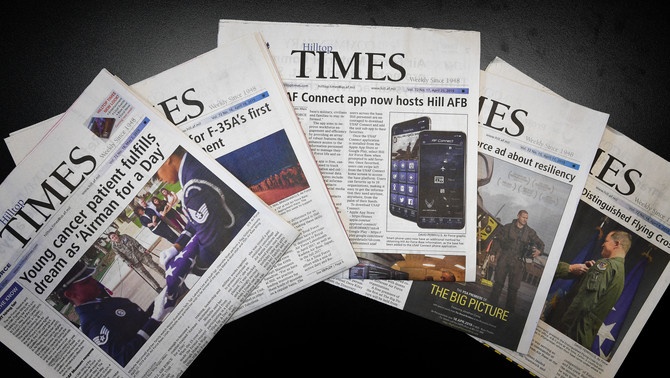Is Newspaper Paywall a Profitable Strategy – Dr. Reo Song

Dr. Reo Song is the Director of the New MS in Marketing program. Below is a summary of his new research.
The newspaper industry has been experiencing continuing recession since the mid-2000s as its subscription and advertising revenues are declining. According to an estimate by the Pew Research Center, total daily subscriptions in the U.S. dropped to 28.6 million in 2018 from 62.3 million in 1990.
Growth in digital advertising revenue has failed to compensate the decline in print advertising, resulting in a loss of newsroom jobs as newspaper companies struggle to recover from financial losses.
Faced with these challenges, media firms have adopted online paywalls (i.e., digital subscription model) to regain a financial foothold. As of 2015, 78 percent of U.S. newspapers with circulations over 50,000 were using a digital paywall strategy, according to the American Press Institute. But, are paywalls a profitable strategy?
To tackle this ambitious question, Reo Song, Associate Professor at California State University Long Beach, and his coauthors Doug Chung at Harvard University and Ho Kim at University of Missouri St. Louis complied a unique dataset on the four primary revenue components of newspaper companies—print subscription, digital subscription, print advertising, and digital advertising. The data consisted of 79 print newspaper companies with subscription and advertising data and page views (or traffic to newspapers’ websites), spanning a 10-year period.
To identify the effects of online paywall on each of the four revenue sources, Song and his coauthors used an advanced research technique, called the synthetic control method, by constructing artificial (synthetic) control firms using characteristics from the newspaper companies in the sample.
Song explains, “If you just compare revenues before and after a paywall, then you’re not controlling for any compounding effects. For example, newspaper revenue could decline not because of the paywall, but because of a bad economy which could have happened at the time of paywall establishment.”
The study showed that a good reputation and exclusivity of content are the main factors that drive the success of digital paywall. Newspapers with less exclusive content, however, have experienced losses when they established paywalls for their digital content. The findings are detailed in the new study, “The Comprehensive Effects of a Digital Paywall Sales Strategy.”
“Our research provides a comprehensive picture—the two revenue sources of the newspapers (subscriptions and advertising), and both the print and digital channels,” says Song. The research revealed that the effects of paywalls varied significantly from newspaper to newspaper, ranging from a 24 percent increase to a 12 percent decline in total revenue.
To understand the complex revenue dynamics, the researchers also investigated whether print subscriptions increased or decreased after paywalls. Their analysis revealed that the paywall had a positive spillover effect on print subscription revenue, thus the digital edition was considered a substitute (vs. a complement) to print edition.
While paywalls brought a success for some newspapers, the net effect of a paywall on digital revenue was negative for many newspapers as a significant decline in digital advertising revenue due to declined visits to their websites virtually cancelled the newly generated digital subscription revenue.
However, the dynamics through which the paywalls affect total revenue varied. “For example, the success of the New York Times was mostly due to a large increase in digital and print subscription revenues. On the other hand, the success of the Des Moines Register came from an increase in print subscriptions and resulting print advertising revenue instead of digital subscription revenue,” explains Song.
“Our analysis shows,” Song says, “Newspapers with renowned brand names and exclusive content fared well with a paywall sales strategy, but the future is not so obvious for other media firms. Our findings could be used by not only newspaper companies, but also major broadcast news networks such as CNN, NBC, and Fox News to evaluate current and potential paywall strategies,” Song says. Meanwhile, the study advises all media companies should carefully assess the comprehensive effects on their revenue sources before establishing a digital paywall.





